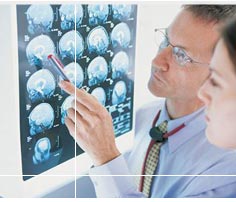 A traumatic brain injury is sustained when a force acts on the brain, causing damage. The injury can be confined to a certain part of the brain or it can involve many areas. Long-term health problems can come from traumatic brain injury, including mental, emotional, and physical illness. Changes in behavior and post-traumatic stress disorder are also common.
A traumatic brain injury is sustained when a force acts on the brain, causing damage. The injury can be confined to a certain part of the brain or it can involve many areas. Long-term health problems can come from traumatic brain injury, including mental, emotional, and physical illness. Changes in behavior and post-traumatic stress disorder are also common.
Symptoms
Depending on the seriousness of the injury and the damage done to the brain, symptoms can be mild, moderate, or severe. These effects may include headache, dizziness, or fatigue. The patient may also have weakness, loss of coordination, and seizures. Some symptoms are apparent right away, while others may not develop until days, weeks, or even years after the injury has occurred.
Diagnostic Techniques
To learn how severe an injury is and what treatments are needed, imaging tests are done. Patients who have experienced mild and moderate injuries may receive X-rays on their skulls and necks to check for possible bone fractures or spine instability.
Those who have moderate and severe injuries will need a computed tomography (CT) scan. This machine creates extremely detailed cross-sectional x-ray images of the skull and brain. It may illustrate bone fractures, brain swelling, tumors, contusions and bleeding. After the initial examination, CT scan, and treatment, a patient may then undergo magnetic resonance imaging (MRI). These devices can show the condition of the brain in more detail than x-rays or CT. However, an MRI is time-consuming and is not yet in place at all hospitals. Because of this, MRI scans are not routinely used in emergency rooms to get a better picture of a brain injury patient’s condition.
A New Focus for MRI Technology
Advances in MRI technology are pointing doctors away from brain scans and towards other parts of the body. Even when there are no obvious signs of head injury, an MRI may show trauma to parts of the body that indicate a strong possibility of head injury. For example, one common yet serious result of a traumatic brain injury is erosive gastritis, or the inflammation and subsequent degeneration of the tissue in the stomach.
MRIs can also show if the patient has developed meningitis, or inflammation of the three membranes that surround the brain and spinal cord, a clear sign of brain injury. Researchers are also looking to use MRIs to map the different regions of the brain in order to investigate how an undamaged area of the brain helps to make up for the damaged area by rewiring its neural connections, a trait known as plasticity.
Contact Us
If you or a loved one has suffered from a traumatic brain injury and are interested in learning about your rights, contact our office. Our caring, experienced attorneys will answer any questions you have and will help you work towards filing a claim. You may be eligible to receive compensation for any medical expenses, pain and suffering, and even lost wages due to your injury.


